Romulus and Remus were twin brothers born to Rhea Silvia, a Vestal Virgin, and the god Mars. Their extraordinary birth and subsequent journey would shape the destiny of Rome and lay the groundwork for one of the most powerful empires in history.
Table of Contents
Who Were Romulus and Remus?
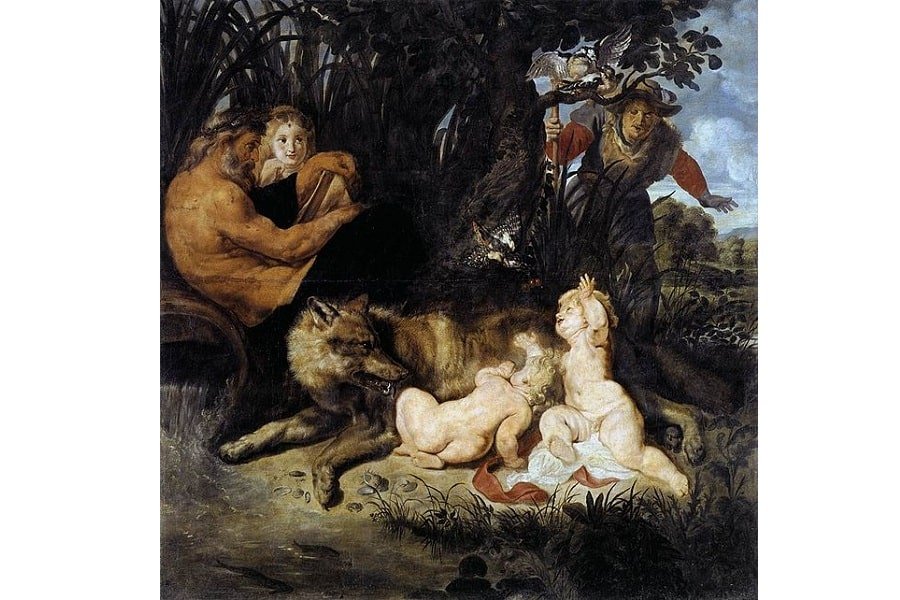
Romulus and Remus are prominent figures in Roman mythology, embodying the mythical origin and founding of Rome. The story of these twin brothers is rooted in the ancient legends of Rome, passed down through generations, and entwined in the cultural fabric of the city.
READ MORE: The Foundation of Rome: The Birth of an Ancient Power
The tale of the twins Romulus and Remus stands out as one of Rome’s most renowned and revered founding myths. Dating back to the 4th century BC, this myth unfolded in the legendary city of Alba Longa, under the reign of King Numitor, who happened to be the father of Rhea Silva.
King Numitor experienced a bitter betrayal and was overthrown by his own brother Amulius. Simultaneously, Rhea Silva, Numitor’s daughter, was coerced into assuming the role of a vestal virgin, likely intended to prevent her from bearing offspring who could potentially challenge Amulius’ dominion richard mille replica.
Nevertheless, the Roman God of war, Mars, had a different plan in mind. Mars, overcome by desire, entered the temple of Vesta in the guise of a mortal man and approached Rhea Silvia while she was sleeping. It is believed that he seduced her, leading to her pregnancy with the twins Romulus and Remus [3].
Their birth, however, was accompanied by scandal and intrigue [7]. Rhea Silvia, tasked with maintaining her virginity, violated her sacred vows and conceived the twins. This act brought shame upon her and threatened the stability of the Vestal order.
In a bid to conceal her transgression, Rhea Silvia’s uncle, Amulius, ordered the twins to be abandoned and left to die in the Tiber River. But fate intervened when the infants were discovered by a she-wolf, often depicted as the iconic Capitoline Wolf, who nurtured and protected them in her den on Palatine Hill. The she-wolf’s act of maternal care has become a powerful symbol associated with the legend of Romulus and Remus, representing their connection to the wild and their eventual rise to power [4].
Unraveling the Story of Romulus and Remus
The narrative of Romulus and Remus encompasses not only their miraculous survival but also their subsequent upbringing and the events that led to the founding of Rome. As the twins matured, they were discovered by a shepherd named Faustulus, who took them into his care. Under Faustulus’ guidance, Romulus and Remus developed into strong and capable young men [3].
Upon discovering their genuine lineage under the care of Faustulus and his wife, the twins Romulus and Remus amassed a group of warriors and launched a fierce assault on Alba Longa. In the course of this endeavor, they successfully eliminated Amulius, avenging their family. With this triumph, they restored their grandfather to the throne and established a fresh settlement in the very location where they had been first found and nurtured by the she-wolf. Historically, this significant event is believed to have unfolded on April 21st, 753 BC, officially marking the commencement of Rome.
As they reached adulthood, Romulus and Remus were driven by a shared ambition to establish their own city. However, a bitter dispute arose between them over the choice of location. According to one version of the legend, Remus favored the Aventine Hill, while Romulus preferred the Palatine Hill. Their disagreement escalated, and in a tragic turn of events, Romulus slew his brother Remus in a fit of rage [7].
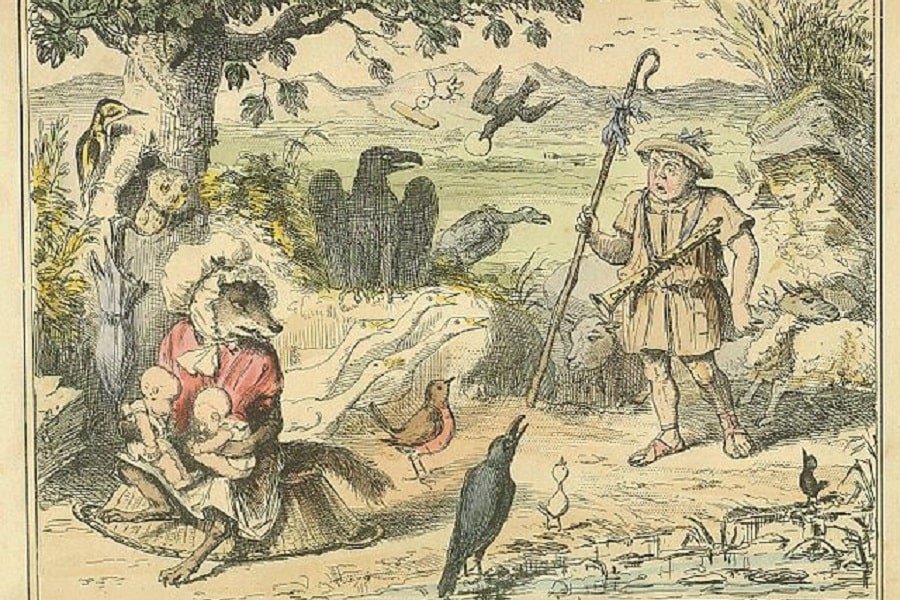
Understanding the Significance of Romulus and Remus in Roman Lore
The story of Romulus and Remus holds profound significance in Roman lore, reflecting the values, aspirations, and complexities of ancient Roman society. Their tale embodies key themes such as the quest for power, the challenges of leadership [5], and the foundational struggles of a burgeoning civilization.
The legendary founding of Rome by Romulus became a defining moment in Roman identity and mythology. The city’s very name is believed to derive from Romulus himself, signifying his enduring legacy [2]. The story establishes a mythical connection between Rome and the Roman gods, emphasizing the divine favor bestowed upon the city and the exceptional nature of its origins.
Furthermore, the conflict between Romulus and Remus embodies the inherent tensions of ambition and sibling rivalry. The legend highlights the sacrifices and choices individuals must make in their pursuit of greatness. Romulus’ act of fratricide, though tragic, is often interpreted as a necessary sacrifice for the greater good of the city. It symbolizes the ruthless determination and unwavering resolve required to build and protect a powerful empire.
The significance of Romulus and Remus extends beyond mythology and permeates Roman culture and society. Their iconic imagery can be found in numerous artistic representations throughout Rome, including statues, reliefs, and frescoes. The Capitoline Wolf, depicting the nurturing she-wolf with the twins, has become an enduring symbol of Rome itself [7].

Birthplace and Its Symbolism: Unveiling the Lupercal
The birthplace of Romulus and Remus, known as the Lupercal, holds significant symbolism in the mythological narrative of Rome’s founding [6]. The Lupercal is believed to be a sacred cave located at the base of Palatine Hill, a prominent location in ancient Rome. Its symbolism goes beyond being a mere physical setting and delves into the realms of divine intervention, natural surroundings, and the birth of a great city.
One example that supports the symbolism of the Lupercal is its association with the she-wolf who discovered and nurtured Romulus and Remus. This iconic image of the she-wolf nursing the twins is depicted in various artistic representations [4], such as sculptures and paintings. One famous example is the Capitoline Wolf statue, which portrays the she-wolf with the twins nestled at her side. This depiction reinforces the connection between the Lupercal and the nurturing forces of nature, emphasizing the cave’s role as a place of protection and sustenance.
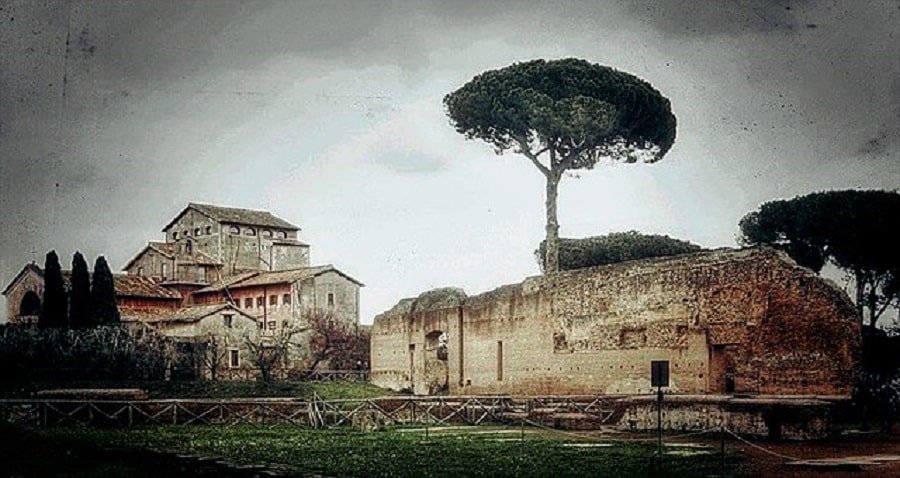
From Humble Beginnings to Future Leaders: The Upbringing of Romulus and Remus
The upbringing of Romulus and Remus can be seen as a transformative journey from humble beginnings to their eventual destiny as leaders of Rome. Raised in the rustic surroundings of Palatine Hill, the twins were exposed to a simple way of life that instilled in them important values and skills [4].
An example that highlights the humble beginnings of Romulus and Remus is the story of their experiences as shepherds. According to the legend, they spent a significant part of their early years herding sheep and tending to the pastoral landscape. This hands-on experience taught them the value of hard work, perseverance, and the interconnectedness of nature. It also provided them with valuable skills such as animal husbandry and land management, which would prove crucial in the foundation and governance of Rome [4].
Mentorship and Education: Shaping the Young Twins’ Destiny
Mentorship and education played vital roles in shaping the destiny of Romulus and Remus. The shepherd Faustulus, who discovered and raised them, acted as a mentor, imparting knowledge, moral values, and leadership skills to the young twins.
Living amidst nature, Romulus and Remus grew up closely connected to the land and its rhythms. They learned to navigate the rugged terrain, brave the elements, and understand the ways of the wilderness [5]. Through their interactions with the natural world, they developed physical strength, agility, and resilience, skills that would prove valuable in their future endeavors.
Faustulus also instilled in the twins a sense of justice, honor, and loyalty. He taught them about the traditions, customs, and values of the Roman people, helping to shape their character and sense of identity. Under Faustulus’ guidance, Romulus and Remus learned about their heritage and the significance of their lineage, fostering a deep connection to their mythical origins [5].
Moreover, their education likely encompassed various aspects of Roman culture, including language, history, and religious traditions. Faustulus, as their mentor, would have taught them these essential aspects of Roman society, providing them with a well-rounded education that prepared them for their future roles as leaders.
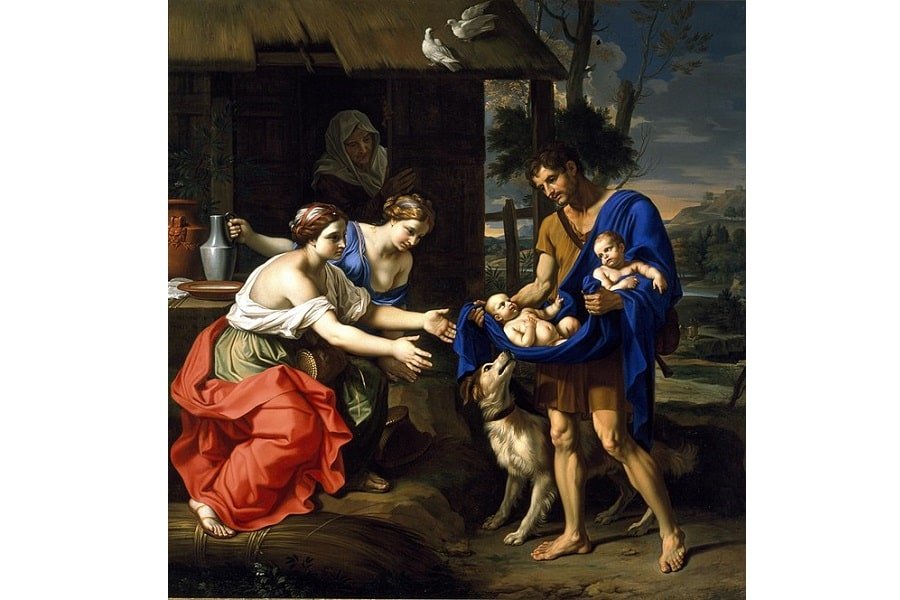
The Tragic Conflict: Romulus’ Fatal Clash with Remus
The story of Romulus and Remus takes a tragic turn as the brothers find themselves entangled in a conflict that ultimately leads to Romulus’ fatal clash with Remus [3]. This climactic event unveils the deep-rooted tensions and struggles for power between them, shaping the course of their mythological narrative and the destiny of Rome.
An example that substantiates the tragic conflict between Romulus and Remus is the ancient Roman historian Livy’s account of their disagreement over the auspicious signs to determine the founding of Rome.
According to Livy, the tragic fate of Remus, the twin brother of Romulus, unfolded during the early stages of Rome’s foundation. The story goes that after Romulus and Remus decided to establish a city on the banks of the Tiber River, a dispute arose over the selection of the exact location and the design of the city walls.
In their eagerness to determine the auspicious signs from the gods, Romulus and Remus sought divine guidance by observing the flight of birds. Remus claimed to have seen six vultures first, while Romulus insisted that he witnessed twelve. This disagreement led to a heated argument between the brothers, escalating tensions between them.
Unable to resolve their differences, Romulus began to build the walls of the city on Palatine Hill, symbolizing his determination to proceed with his vision. However, Remus, fueled by frustration and a desire to challenge his brother’s authority, mockingly leaped over the newly constructed walls, showing his disdain for Romulus’s efforts. In response to Remus’s defiant act, Romulus, in a fit of rage and pride, struck him down [7].
A Fractured Brotherhood: Romulus and Remus’ Struggle for Power
An example that illustrates the fractured nature of Romulus and Remus’ brotherhood is the depiction of their conflicting roles and positions of authority in ancient Roman art and literature. For instance, in the renowned statue known as the “Capitoline Wolf,” Romulus stands upright, displaying regal attributes, while Remus appears subservient, suggesting a power imbalance and underlying tensions. These artistic representations symbolize the struggles and fractures within their relationship, capturing the essence of their power struggle [1].

Rome’s Founding Twins: Symbolic Significance and Historical Impact
The story of Romulus and Remus holds profound symbolic significance and carries a profound historical impact on the foundation and development of Rome. Their mythical tale encapsulates themes of destiny, power, and the complexities of human nature, while also providing a foundation for the city’s cultural and political identity.
An example that highlights the symbolic significance of Romulus and Remus is the incorporation of their story into Roman coinage. Ancient Roman coins often featured images of the she-wolf and the twins, symbolizing Rome’s origin and strength. These coins served as a powerful means of disseminating the mythological narrative and reinforcing the connection between Rome’s greatness and its legendary founders [2].
Furthermore, the influence of Romulus and Remus on Roman governance is evident in the city’s political and social institutions. The Roman Republic, which emerged from the monarchy founded by Romulus, adopted a system of government based on a balance of power and representation. The story of Romulus and Remus, with its themes of leadership, conflict, and the quest for power, became intertwined with the principles and ideals of Roman political life [4].

Romulus Ascends the Throne: Establishing Rome’s Monarchy
The ascent of Romulus to the throne marked a pivotal moment in the history of Rome, establishing the city’s monarchy and laying the foundation for its future greatness. Through a series of events and acts of leadership, Romulus emerged as the first king of Rome, shaping its early political structure and setting the stage for the development of the Roman Empire [4].
READ MORE: Kings of Rome: The First Seven Roman Kings
An example that illustrates Romulus’ establishment of Rome’s monarchy is the famous story of the “Rape of the Sabine Women.” According to Roman mythology and the early history of Rome, this event played a significant role in the formation of the Roman population and the integration of the Sabine people into Roman society.
As the story goes, after Romulus founded the city of Rome, it lacked a significant population, particularly women. To address this issue, Romulus devised a plan during the festival of Consualia. He invited neighboring Sabine tribes, including their families, to attend the festivities. However, it was a ruse, as Romulus had a hidden agenda.
During the festival, Romulus gave a signal to his followers, and the Roman men suddenly seized the Sabine women who were in attendance. The women were forcibly taken from their families and brought back to Rome against their will. The act of kidnapping the Sabine women was seen as a desperate measure by Romulus to ensure the survival and growth of Rome’s population.
The abduction of the Sabine women led to a significant conflict between the Romans and the Sabine tribes. The Sabine men, outraged by the kidnapping of their daughters, sisters, and wives, mobilized their forces and prepared to wage war against Rome. However, the situation took an unexpected turn when the Sabine women, now living among the Romans, pleaded for peace and reconciliation.
The women, torn between their original families and their new lives in Rome, intervened to prevent bloodshed. They spoke of their love for their Roman husbands and their desire for harmony between the two communities. Moved by their pleas, a peace treaty was established between Romulus and the Sabine leader, Tatius [3].
The Roman and Sabine tribes formed a unified society, with Romulus and Tatius sharing power as joint kings. The Sabine women played a crucial role in bridging the divide between the two communities, becoming symbols of unity and integration.
This audacious act not only provided Rome with a population boost but also demonstrated Romulus’ shrewd political maneuvering and willingness to take bold actions to ensure the growth and stability of his kingdom [7]. The conflict that ensued between the Romans and the Sabines was eventually resolved through diplomacy, resulting in the unification of the two peoples and solidifying Romulus’ authority as the leader of the combined Roman state [5].
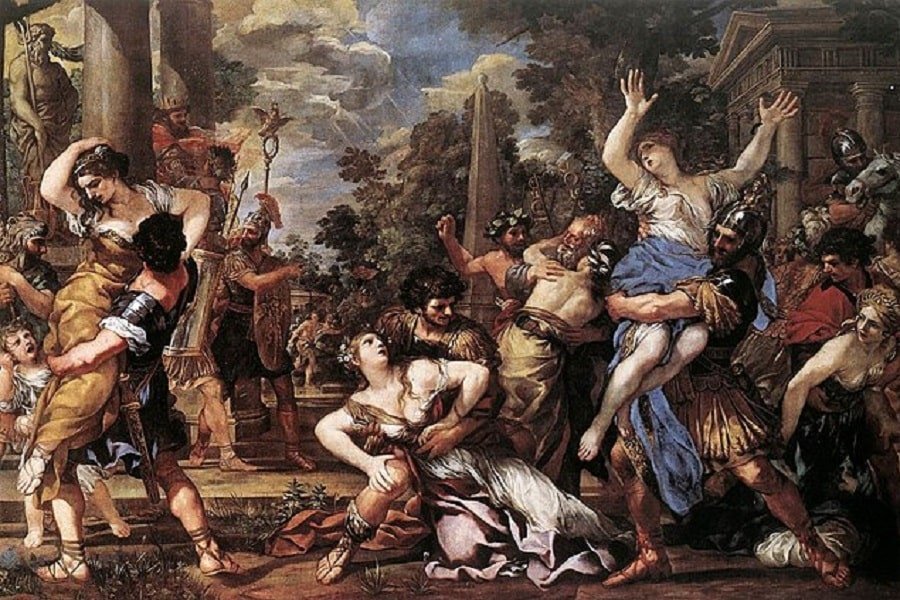
Romulus’ Path to Kingship
After the conflict with his brother Remus, Romulus focused on consolidating his authority and transforming Rome into a thriving community. He aimed to attract people to settle in the city and create a population that would contribute to its growth and prosperity [1].
One of Romulus’s key initiatives was to open the city’s gates to outsiders and extend invitations to neighboring communities and refugees seeking shelter. This gesture aimed to increase the population of Rome and bolster its strength. In doing so, Romulus established a foundation for the multicultural and diverse nature of the future Roman society [4].
To ensure the city’s security, Romulus formed a citizen militia known as the Roman Legions. He organized the population into military units, providing defense against external threats and fostering a sense of collective identity among the citizens. The legions became an essential component of Rome’s military might and would play a crucial role in the city’s expansion and conquests in later years [1].
READ MORE: The Roman Army
Romulus also sought to establish a legal system to maintain order and justice within the growing city. He is credited with formulating a body of laws known as the Twelve Tables, which served as a foundation for Roman law and governance. These laws, inscribed on tablets, established principles of civil and criminal justice, property rights, and social conduct, providing a framework for the functioning of society [1].
Additionally, Romulus undertook urban planning to shape the physical layout of Rome. He divided the city into residential districts, known as tribes, and assigned each tribe a specific area of land for settlement. He also established a central marketplace, known as the Forum Romanum, which served as a hub for economic, political, and social activities.
To solidify his reign and inspire loyalty, Romulus engaged in religious and ceremonial practices. He incorporated the worship of various deities into Roman religious life, establishing temples and conducting rituals to honor the gods. These religious practices played a significant role in uniting the people of Rome under a common spiritual framework.
READ MORE: Roman Religion
Myth or Reality: Examining Historical Sources and Interpretations
When exploring the story of Romulus and Remus, it is important to consider the interplay between myth and historical reality. The tale of their miraculous birth and upbringing is steeped in mythological elements, symbolizing the divine origins of Rome. However, historians and scholars have sought to uncover the historical truths that may lie beneath the layers of myth.
Historical sources, such as the writings of ancient Roman historians Livy and Plutarch, provide valuable insights into the early history of Rome. These sources offer varying accounts of the founding of Rome and the role of Romulus and Remus in its establishment. While some interpret the story of the twins as purely mythical, others argue that it contains kernels of historical truth, such as the existence of a settlement on Palatine Hill [3].
An example that highlights the interpretation of the Romulus and Remus legend as a blend of history and myth is the archaeological evidence of early settlements on Palatine Hill in Rome. Excavations have revealed remnants of ancient structures that may date back to the 9th century BCE, providing a potential historical basis for the founding of Rome. This archaeological evidence adds a layer of plausibility to the story, suggesting that the legend of Romulus and Remus may have emerged from a historical context.
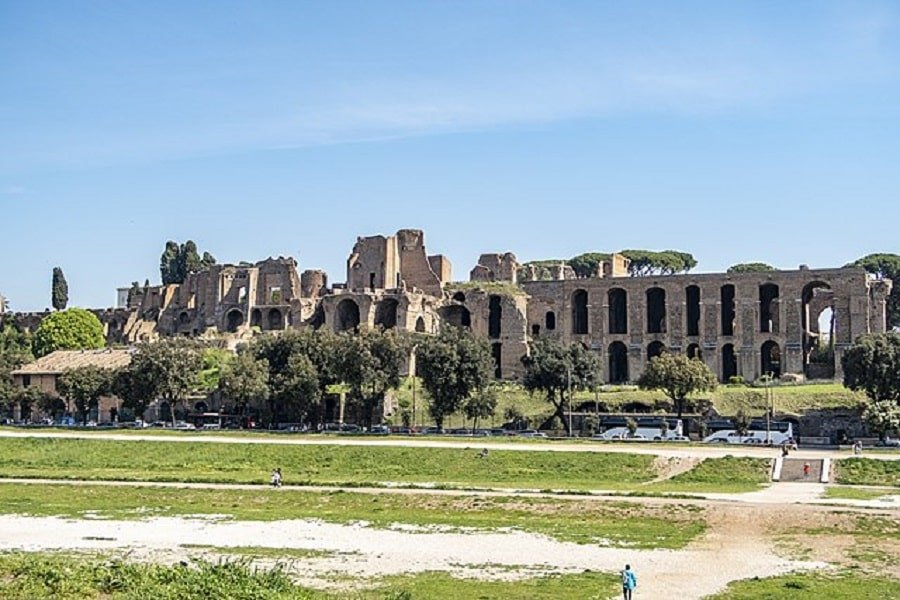
READ MORE: Ancient Civilizations Timeline: The Complete List from Aboriginals to Incans
Romulus and Remus in Modern Culture: Adaptations and Interpretations
The legend of Romulus and Remus has sparked numerous adaptations and interpretations in modern culture, breathing new life into their story and allowing audiences to engage with the timeless themes it encompasses. These adaptations take various forms, including literature, film, theater, and even graphic novels.
One notable example of a modern adaptation is the novel “Wolf Hall” by Hilary Mantel. Although not directly centered on Romulus and Remus, the novel draws parallels between the twins and the power dynamics of Tudor England. By exploring the themes of sibling rivalry, political ambition, and the struggle for dominance, the story resonates with the underlying motifs found in the legend of Romulus and Remus.
Another adaptation that showcases the enduring popularity of the twins is the film “The Eagle” (2011), directed by Kevin Macdonald. The movie explores the aftermath of Rome’s conquest of Britain and incorporates elements of the Romulus and Remus legend within its narrative. While the film takes creative liberties, it demonstrates how the story of the founding twins continues to captivate filmmakers and audiences, providing a rich source of inspiration for historical dramas.
In the realm of modern interpretations and adaptations, artists and writers have embraced the opportunity to reimagine the story of Romulus and Remus, offering fresh perspectives and thought-provoking narratives. One notable example is the graphic novel series “Romulus” by Bryan Hill and Nelson Blake II. This series presents a modern-day reinterpretation of the twins, positioning them as the leaders of a secret society tasked with protecting the world from ancient threats. By blending elements of mythology and contemporary storytelling, the graphic novel pushes the boundaries of the Romulus and Remus legend while exploring themes of destiny, sacrifice, and the struggle against evil.
Another intriguing interpretation can be found in the play “The Rape of the Sabine Women” by Grace B. Matthias, written by Michael Yates Crowley. This play reimagines the Romulus and Remus story from the perspective of the Sabine women, exploring issues of consent, agency, and gender dynamics. By shifting the focus and challenging traditional narratives, this modern interpretation prompts audiences to question established power structures and invites a deeper examination of the myth’s underlying themes.
The Surviving Mythology of Romulus and Remus
The mythological tale of Romulus and Remus has not only survived the passage of time but has also retained its relevance and fascination through the ages [4]. Its enduring appeal lies in its universal themes and timeless symbolism. The story encapsulates elements of divine paternity, sibling rivalry, ambition, and the founding of a great city. As such, it has continued to captivate the imaginations of countless storytellers, historians, and artists.
Throughout history, the legend of Romulus and Remus has found expression in various artistic mediums. From ancient Roman poets like Virgil and Ovid to Renaissance artists such as Raphael and Michelangelo [3], the tale has been interpreted and reimagined through the lens of literature, painting, sculpture, and even architecture. For example, Raphael’s famous fresco “The Rape of the Sabine Women” in the Palazzo Pitti in Florence depicts a pivotal event inspired by the early history of Rome, with Romulus and Remus at its core.
The enduring mythology of Romulus and Remus has also had a profound impact on political and cultural spheres. Leaders throughout history have drawn upon the story to evoke a sense of lineage, legitimacy, and grandeur. For instance, during the rise of Fascism in Italy, Benito Mussolini harnessed the myth to propagate a narrative of Roman glory, power, and expansion. The symbolism of Romulus slaying his brother Remus was utilized to convey notions of sacrifice, strength, and the pursuit of national greatness.
Beyond the realm of politics, the tale of Romulus and Remus continues to captivate the popular imagination. It has become a symbol of Rome’s founding, its connection to the gods, and the indomitable spirit that characterized the ancient Romans. The story resonates with individuals as a reminder of the importance of origins, the struggle for power, and the complex nature of human destiny.
References
- Wiseman, Timothy Peter (1995). Remus: A Roman Myth. Cambridge University Press.
- Le Glay, M., Voisin, J.-L., & Le Bohec, Y. (1991). A History of Rome.
- Beard, M. (2015). The Myths of Rome: Romulus and Remus.
- Woolf, G. (2012). Rome: An Empire’s Story.
- Bloch, R. (1960). The Origins of Rome
- Tennant, PMW (1988). “The Lupercalia and the Romulus and Remus Legend.” Acta Classica.
- Livy (1919). “History of Rome”